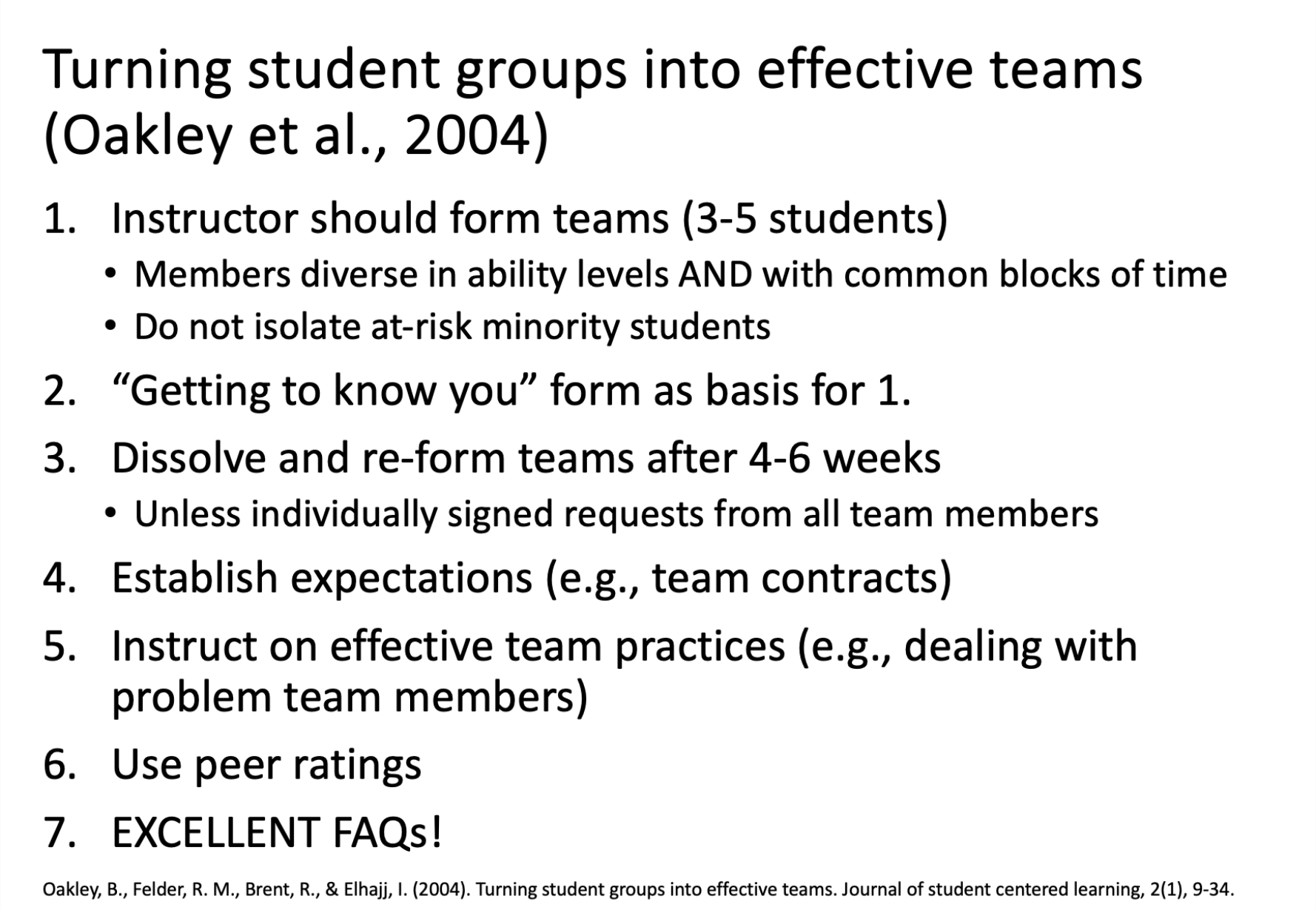
Currently reading about how to successfully organize team work in student groups
Quick summary of this month’s iEarth Journal Club article: Clinton & Smith (2009) focus on how to “make” students take on responsibility in team work through team contracts and peer evaluation, in the context of cooperative learning. My summary below, and the strong recommendation to read what Oakley et al. (2004) have to say about “Turning student groups into effective teams” (see also featured image). That latter article is really one of the most useful articles I have come across over many years of reading, including a great FAQ section, and templates.
Anyway, here is my summary of what Clinton & Smith (2009) write:
Team contracts structure the learning experience by describing how students want to work together and are ideally developed right away when new teams are put together (not only after problems appeared). By negotiating roles and responsibilities, timelines, deadlines and ways of working together, students tend to, anecdotally, work together more efficiently and with less friction, and tasks get clarified early on. Team contracts can be developed within the team, or modified based on templates that the instructor provides, but should ideally include individual responsibilities (showing up on time, contributing in specified ways, …, possibly assigning roles like coordinator or scribe), and should be signed by all team members to create commitment.
Peer evaluations can be one accountability mechanism, since it can reveal information to the instructor from within the team, e.g. regarding free riders. They can take many different forms, for example checking the individual points of the team contract on a Lickert scale (e.g. “Team member x always attended meetings”: 1 (don’t agree) … 7 (fully agree)). Peer evaluations can then be combined with team-based grades (typically for 10-25%, but that is something that I think should be negotiated with students). It is also a good idea to let people self-evaluate (even though self-ratings are typically higher than peer-ratings, especially for men, but that’s probably also interesting for students to reflect on — how come they all overestimate their own contribution?). Peer evaluations can be conducted anonymously (but depending on group size it is not really all that anonymous), and that might make people feel more confident in being honest in their evaluations, and one can get as complicated as one likes in how average scores are calculated (e.g. by weighing evaluations less when there is no explanation given for the scores, or if someone gave everybody 100%).
Nothing wrong with that article, but I find the Oakley et al. (2004) one a lot more helpful.
Clinton, B. D., & Smith, P. A. (2009). Instilling student responsibility with team contracts and peer evaluations. In Advances in Accounting Education (pp. 81-101). Emerald Group Publishing Limited.
Oakley, B., Felder, R. M., Brent, R., & Elhajj, I. (2004). Turning student groups into effective teams. Journal of student centered learning, 2(1), 9-34.